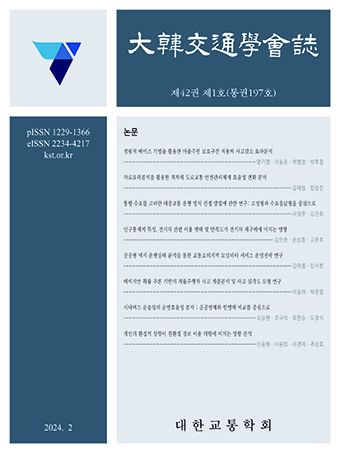Article
Abstract
References
Information
Kim S. J., Jung C. S., Jang S. Y. (2016), A Study on Preparing Measures for Reducing Aggressive Driving and Road Rage by Analysing Mechanism of How the Driving Behavior Determinants and Dangerous Driving Behavior Factors Affect Aggressive Driving and Road Rage: Targeting Traffic Law Violator and Assaulter of a Traffic Accident, J. Korean Soc. Transp., 34(1), Korean Society of Transportation, 15-28.
- Publisher :Korean Society of Transportation
- Publisher(Ko) :대한교통학회
- Journal Title :Journal of Korean Society of Transportation
- Journal Title(Ko) :대한교통학회지
- Volume : 36
- No :5
- Pages :346-359
- Received Date : 2018-07-17
- Revised Date : 2018-08-20
- Accepted Date : 2018-10-31
- DOI :https://doi.org/10.7470/jkst.2018.36.5.346



 Journal of Korean Society of Transportation
Journal of Korean Society of Transportation







